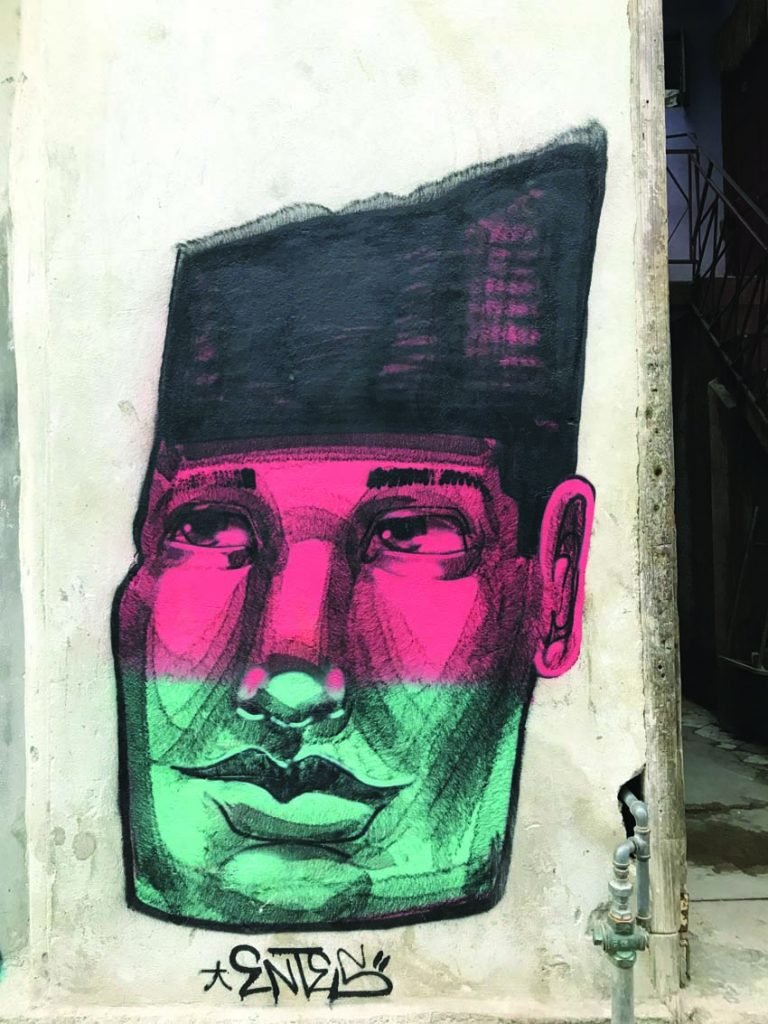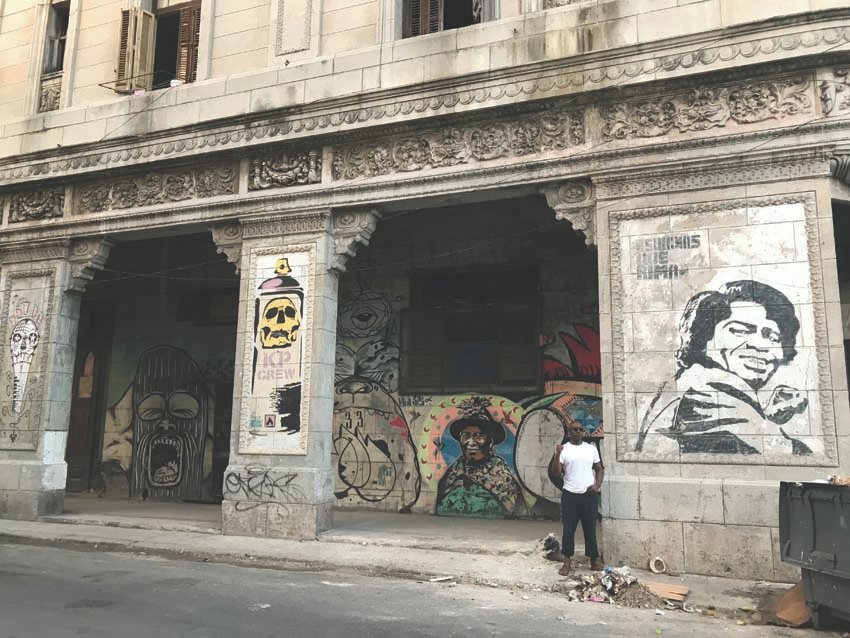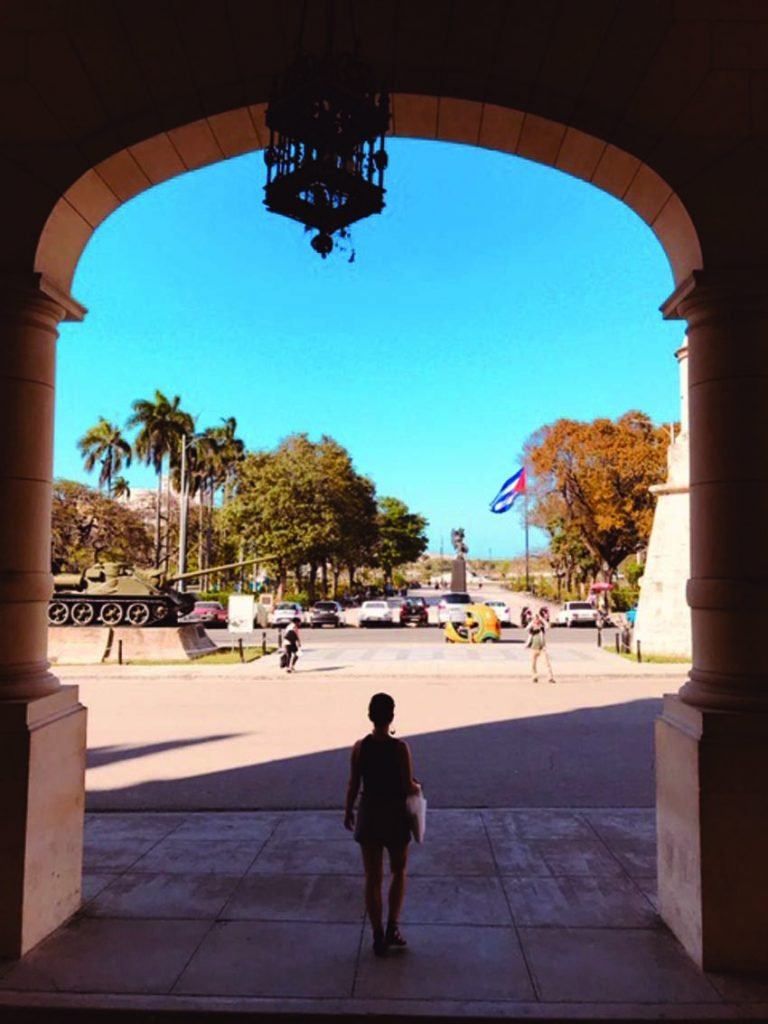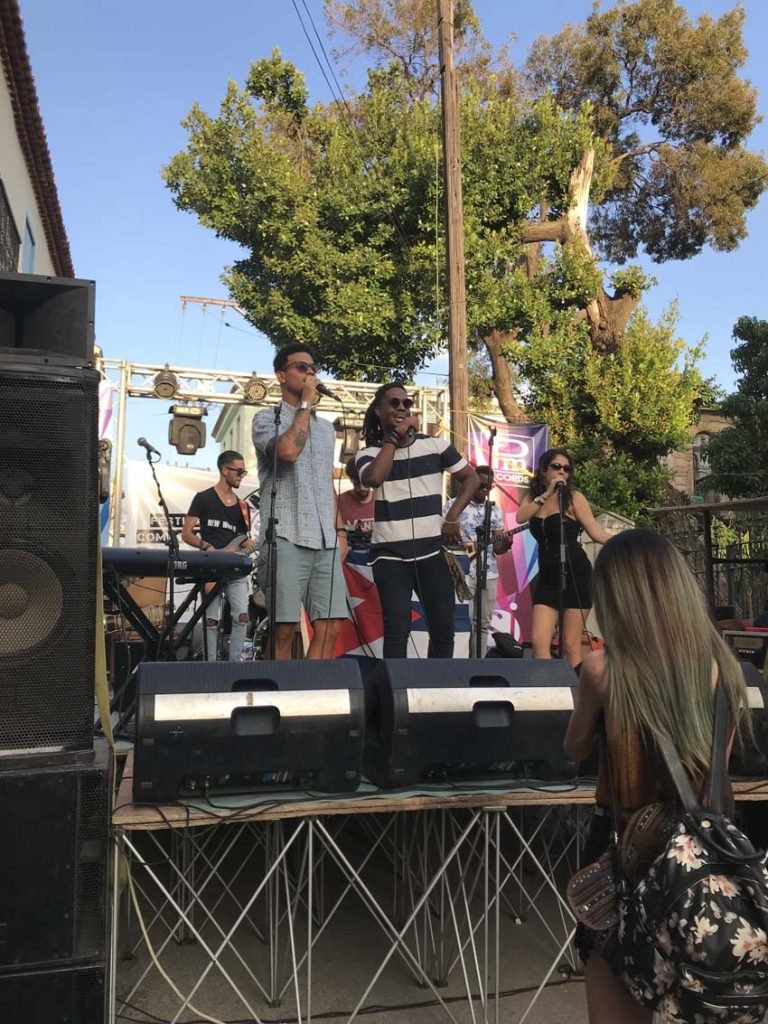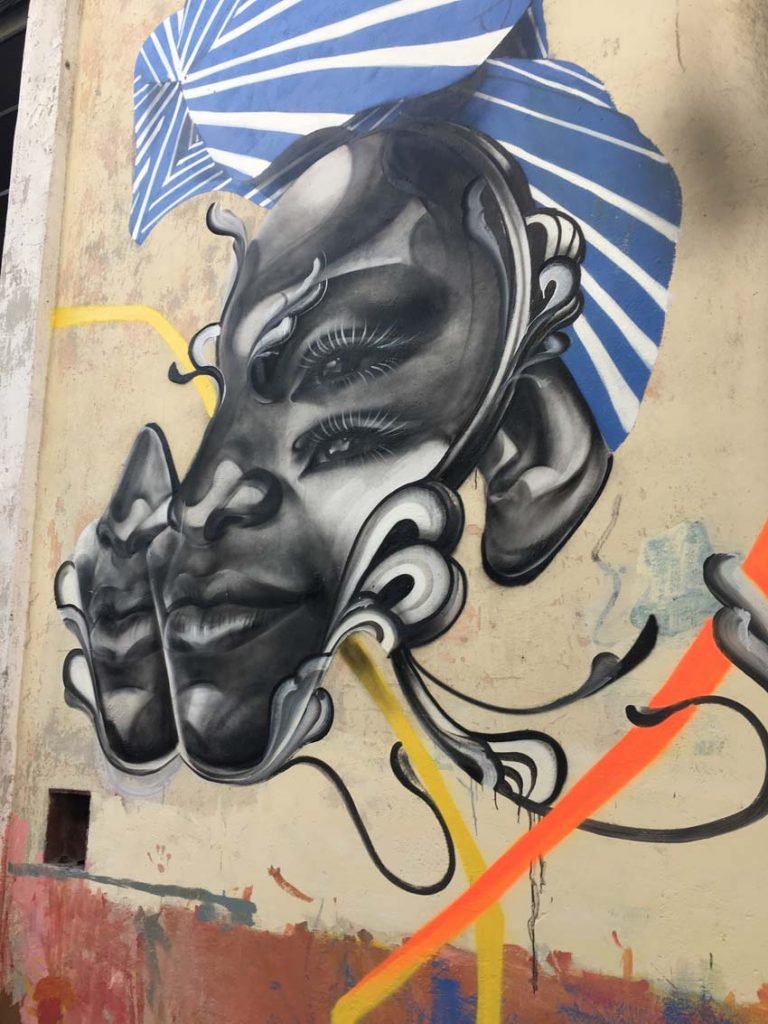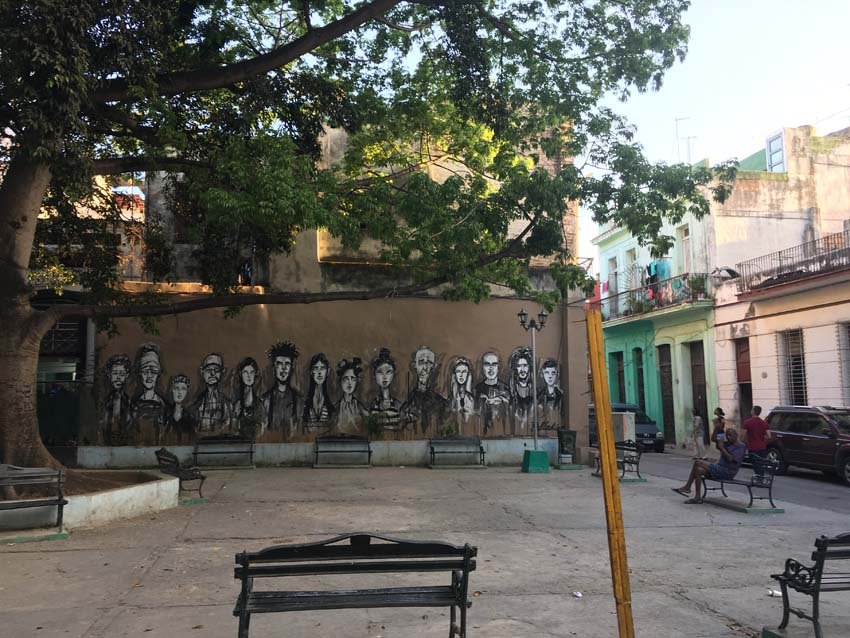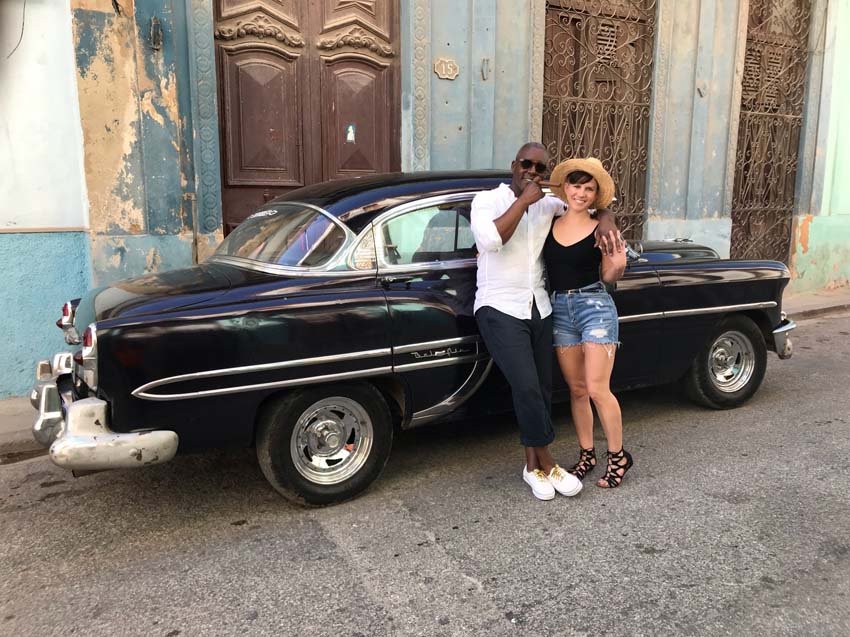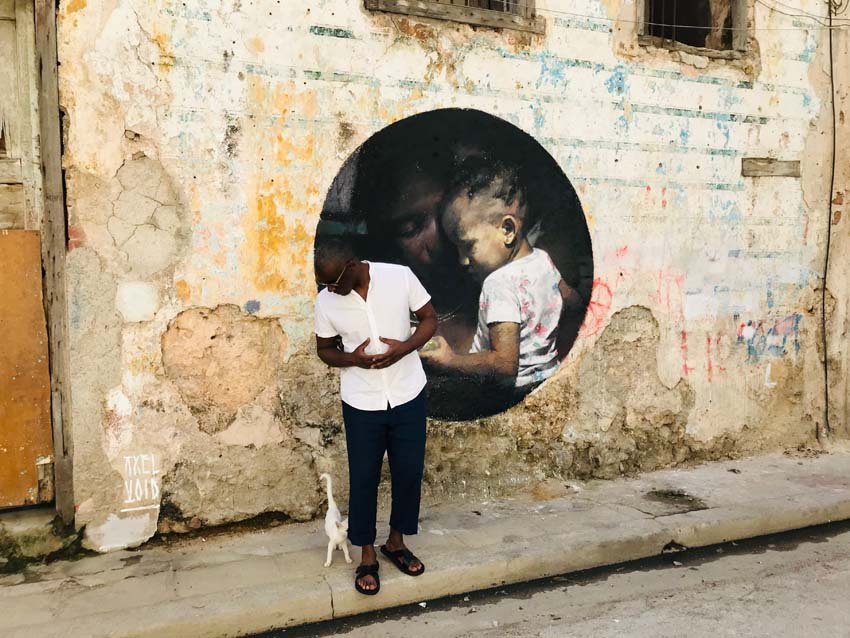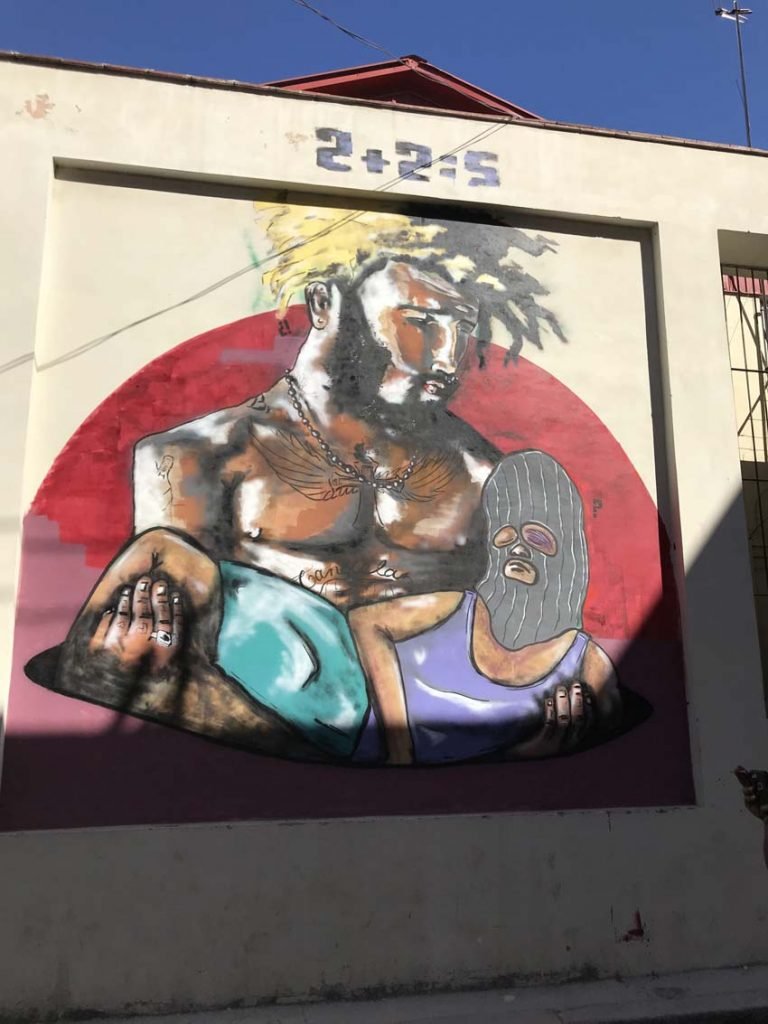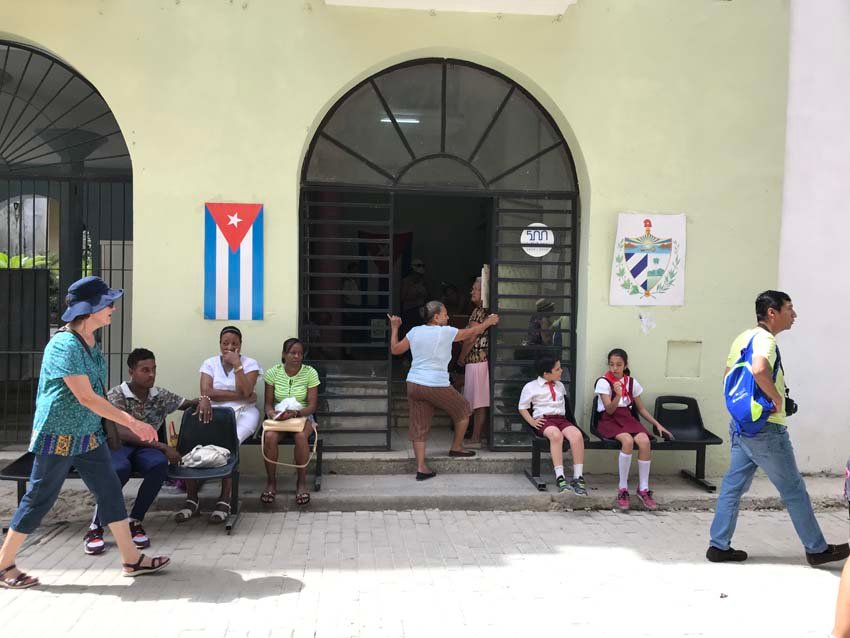+ By William F. Rowel & Amy L. Cruice + Photos by William F. Rowel
Havana Cuba, with its mix of Spanish and African roots, has a myriad of seemingly incongruous attributes. It is romantic, magical, and gracious while also gritty, antiquated, and inscrutable. We learned about Cuba solely from US textbooks and television, and chose to experience it in the moment, from what we would see, hear, and feel. Everything evoked strong senses and emotions, and we fell deeply in love with the city.
Being in Havana felt like being transported back in time. Everything looked different—the casual clothing and hairstyles (reminiscent of the 1970s and 1980s), the mix of colors, the closeness of buildings and neighborhoods, the old classic cars, and the breathtaking weathered buildings. We discovered a collage of Art Deco, Art Nouveau, and Moorish-inspired Spanish colonial architecture and Russian-influenced structures—from a stunning patina of peeling, soft pastel paint on masterfully crafted old buildings on the verge of ruin to majestic historic buildings such as El Capitolio, Hotel Nacional de Cuba, and Museo de la Revolución (Museum of the Revolution). Each building told stories, reflecting a rich history of world politics. We rode bicycles through a labyrinth of side streets and boulevards that snake through the city’s three main areas: Old Havana, Vedado, and the newer suburban districts. It was a photographer’s paradise that answered questions and begged even deeper ones.
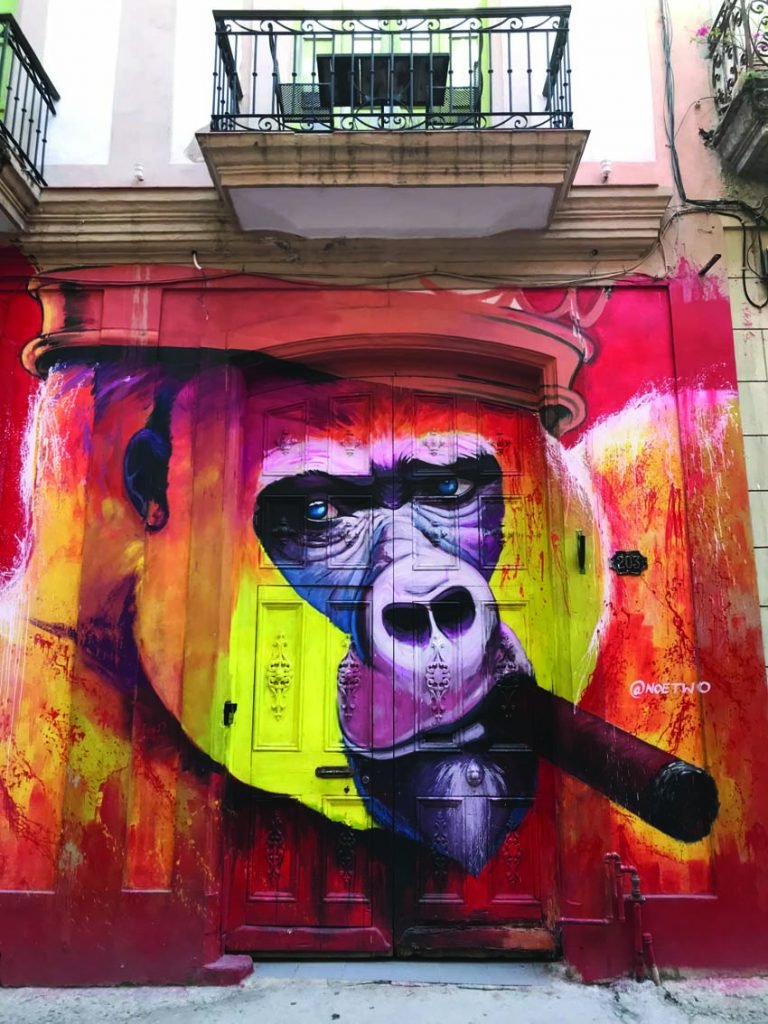
Throughout the city, alongside the gorgeous architecture, are iconic, commanding sculptures, statues, and monuments decorating public spaces, airy courtyards, and pocket parks. Given its political history, with the Cuban Revolution and the Conquistadors, and the presence of the Catholic Church, Havana finds itself rich with cultural iconography and political propaganda. In the middle of Plaza Vieja, a large, open public plaza, Girl on a Rooster, a bronze sculpture by Roberto Fabelo, is a whimsical installation. A few blocks away, in Havana’s Central Park, is a towering statue of national hero José Martí. Alongside the Malecón, a broad esplanade, roadway, and seawall stretching five miles along Havana’s coast, we found a striking, controversial statue of Martí clutching a child and pointing in the direction of the US Embassy. Marti is celebrated for his poetry and journalism and for fighting for Cuba’s independence from Spain. Also along the Malecón, as the sun set over the water, we stumbled upon a sculpture of a man with a fish on his head and found its African influence tantalizing. As powerful waves crashed beneath us, we sat on the seawall with a man carving a beautiful, dark wood sculpture in the likeness of a Nubian goddess. Habaneros—the people of Havana—young and old, are drawn to the Malecón to socialize and celebrate.
In the visual arts, religion, music, language, and virtually every other form of expression, the African roots of modern Cuban identity are profoundly deep and highly visible. Afro-Cuban culture appears to be celebrated as an integral part of Cuban culture.
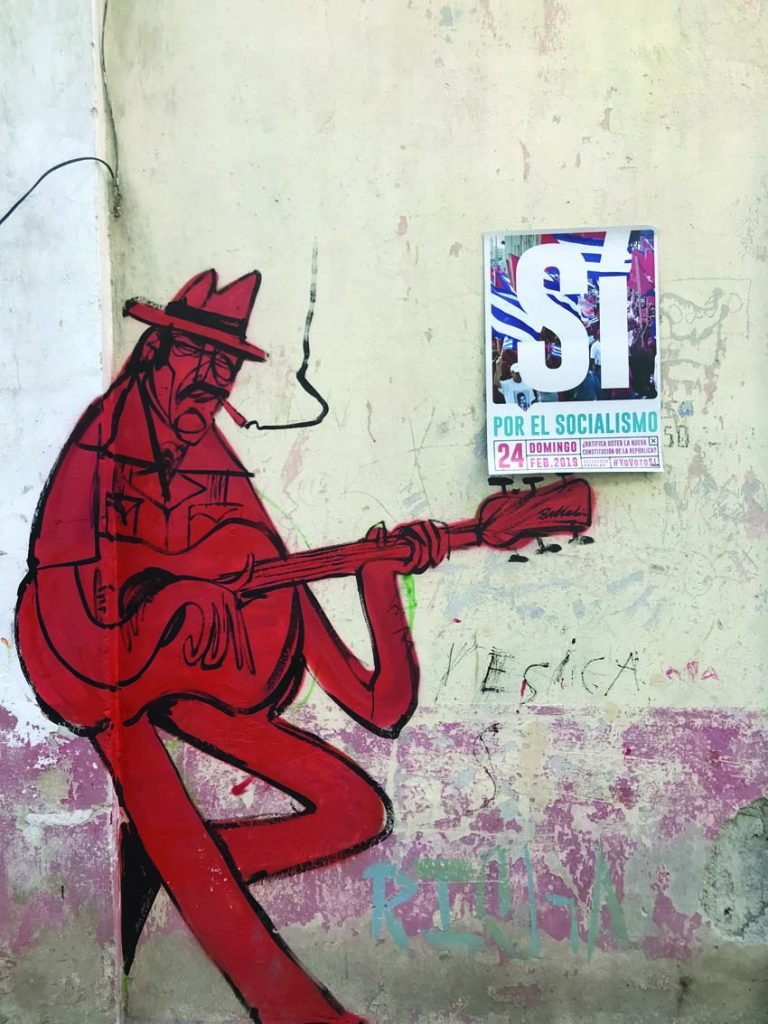
The two-block alley in Centro Havana known as Callejón de Hamel is a shrine to Afro-Cuban religions through the artwork of Salvador González, with buildings lined with brightly colored paintings, murals, sculptures, and objects depicting rituals and deities. Vibrant street art cover every visible wall.
Music and street festivals seemed to pop up around nearly every corner. Performances combined rhumba, Afro-Cuban jazz, salsa, soukous, West African re-adaptations of Afro-Cuban music, Spanish fusion genres, flamenco, and hip-hop. On our first day, we stumbled upon a hip-hop performance; hundreds of young people were jammed into a narrow side street, dancing to a bass-laden mix of Spanish and African-American rap music. Another night, while walking home through Central Park, we discovered a huge outdoor concert with a diverse line-up of music and an audience that knew all the lyrics. We went to an underground jazz club called La Zorra y El Cuervo, where the entrance is an old London phone booth and live Cuban bands perform every night of the week.

While free speech is not guaranteed in Cuba as it is in the United States, artists express themselves through street art, mosaics, screen prints, and paintings all over the city. Their use of color varies, from bright and vibrant, to black and white, to muted, weathered hues. The street art is witty and confounding, its symbolism and characters left us feeling intrigued and apparently uninformed. The city’s streets are outdoor galleries, its walls presenting political statements and other expressions. Cuba has a culture of necessity, and Havana artists transform unusual materials into art. Much of the artwork we were drawn to was post-revolutionary and hyperrealist, with themes of preserving culture, obtaining freedom, and nationalist patriotism. As a local artist said, “In America, you have ten choices, in Europe they have five choices, here in Cuba, we only have two choices.”
Havana’s murals speak to Cuban life, people, and families, incorporating history, political statements, Afro-Cuban religion, and pop culture icons from around the world. Since 2016, well-known local street artist Fabián has painted his masked character Supermalo (Superevil) more than 100 times. Next to each painting is Fabián’s signature, 2+2=5?, a direct reference to the passage from the book 1984, in which George Orwell writes, “In the end the Party would announce that two and two made five, and you would have to believe it.” Mr. MYL, another renowned street artist, places a character named Caníbal who represents the Caribbean people in his street art.
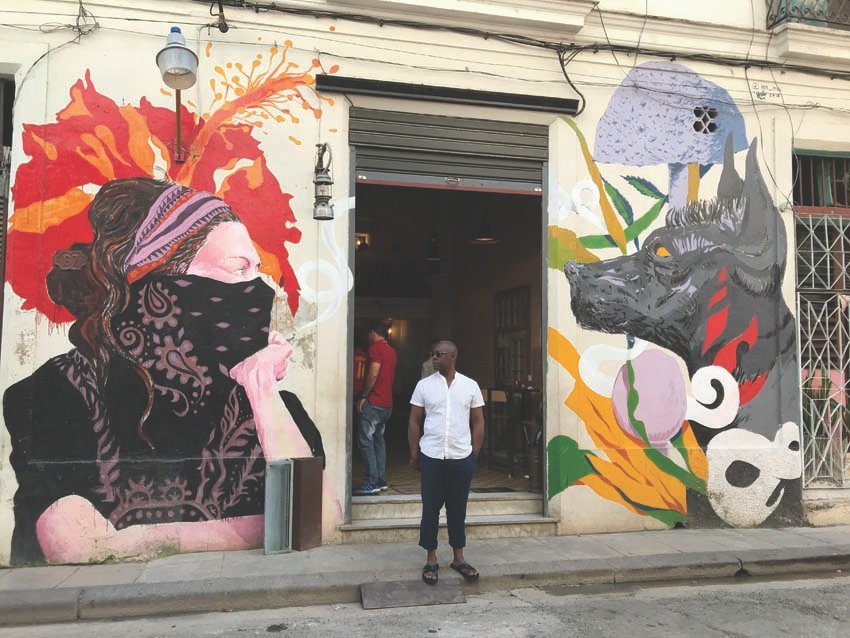
International street artists such as Noe Two, Stephen Palladino, Axel Void, and Entes have also made their mark on Havana’s facades. On the cutting edge of the street scene is a clothing line, Centro, inspired by the community of skaters, street artists, and hip-hop musicians that populate Havana. It is giving a platform for Cubans to collaborate and share their creativity.
Our Cuban experience was an exchange course on the transformative, emancipating power of artistic expression. We learned, through total immersion, that despite political, social, economic, geographic, and individual suppressions, art continues to float. █


